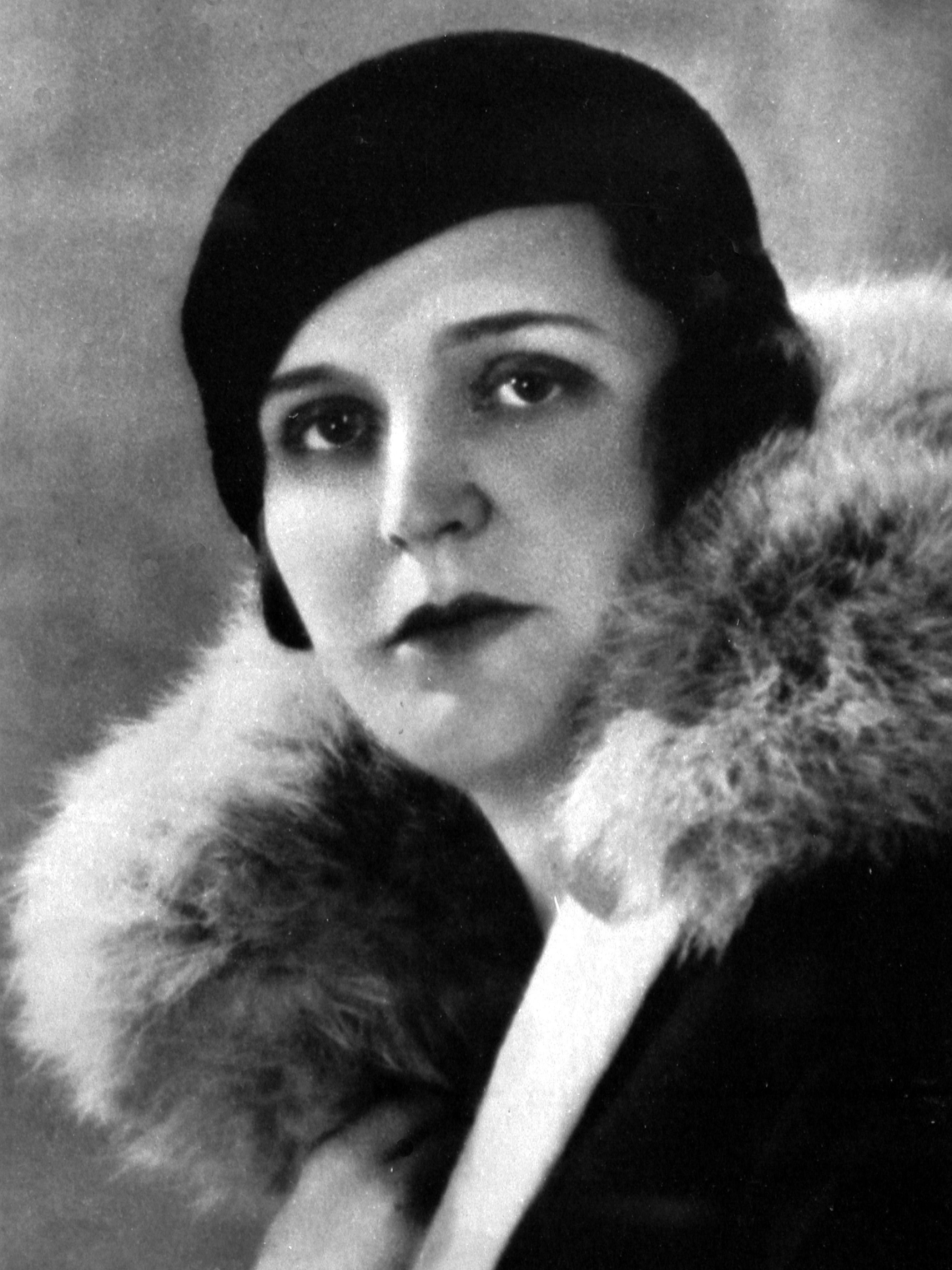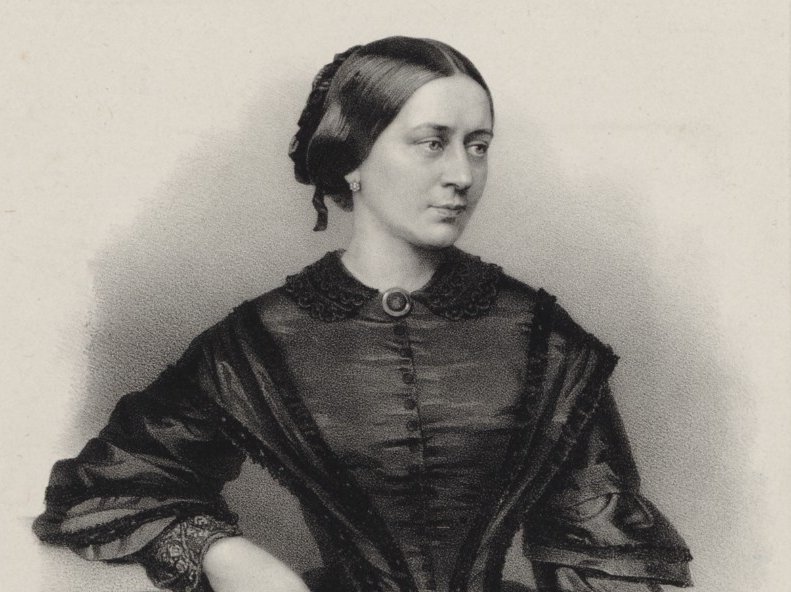- Portrait
- History

In the 1920s, Germaine Tailleferre stirred up the musical life of France as a member of the famous composers’ collective “Les Six”. Even so, much of her work was subsequently neglected.Here is a portrait of Tailleferre’s turbulent life.
One of Germaine Tailleferre’s friends described her as being “bright-faced, with laughing eyes and blond hair that fell diagonally across her brow – she really was ‘the princess of Les Six’.” That same friend went on to say that “it was reassuring for us other women to see how one of us could become so emancipated”. Germaine Tailleferre was not yet thirty when in the early 1920s she became one of the most famous figures on Paris’s musical scene. She owed her reputation first and foremost to the fact that she was a member of Les Six and, moreover, the only woman in a group of men that included Darius Milhaud, Arthur Honegger, Francis Poulenc, Georges Auric and Louis Durey.
Music as an expression of the fullness of life
From today’s perspective, the legendary group of Les Six can be seen as an avant-garde reform movement in contemporary French music. In fact, its existence came about more or by of chance. Its spiritual fathers were the writer and film director Jean Cocteau and the composer Erik Satie, both of whom were looking for aesthetic alternatives to Impressionism and Romanticism and, above all, to the musical language of Wagner, all of which they saw as overloaded, overblown, over-the-top and emotionally overcharged. Cocteau and Satie set store, rather, by “everyday music”, and by sounds that they had picked up in the street, at the circus, in the music hall and at jazz clubs. They advocated succinct forms and a musical style notable for its irony and wit. Their views and their ideas were enthusiastically taken up by a younger generation of creative musicians. As early as 1917, Satie had gathered around himself a group of young composers whom he called “Les Nouveaux Jeunes” who included Milhaud and Tailleferre, both of whom were studying at the Paris Conservatoire.
A woman among men
By this date Germaine Tailleferre was already well-integrated into the cultural life of Paris, frequenting, as she did, the artistic circles associated with such leading figures as Emmanuel Centore, Guillaume Apollinaire, Marie Laurencin and Pablo Picasso. It was Picasso who advised her never to stop looking for the new, and not to rely on tried and tested remedies. “This was the best composition lesson I ever received,” Tailleferre commented later. All of these young artists met to exchange ideas, to present their latest works, and to amuse themselves. Satie organized exhibitions at which the young members of his circle would perform their compositions as background music, an understated acoustic interior.
This musique d’ameublement – literally “furniture music” – was le dernier cri in Paris. In January 1920 a journalist published an article on one of these concerts that included music by all five male composers and by Germaine Tailleferre. It caused a sensation. In it the writer referred to the “Mighty Handful” – a loose association of five Russian composers – as “les cinq Russes” and by analogy coined the phrase “les six Français”, marking the birth of Les Six. The group immediately produced two composite pieces that were widely noticed: in the Album des Six, each of the group’s six members published a piano piece of his or her composition, while the ballet Les Mariés de la Tour Eiffel was another joint venture. Despite this, the group did not stick together for long as an active artists’ collective. Instead, its members went their separate ways, although they all remained friends for the rest of their lives.
The first step is always the hardest
Germaine Tailleferre was born in a Paris suburb in 1892, the daughter of a wine merchant, and did not find it easy to lead the life of a composer despite her early promise. When she was only two and a half, she could already pick out tunes on her toy piano; by the age of eight, she was writing her first compositions. She was also a fine painter and an excellent draughtswoman. Her mother supported her in her artistic ambitions, but her father was determined to prevent her from training as a professional musician, regarding such a career as tantamount to prostitution. And so his daughter studied in secret, winning one prize after another at the Paris Conservatoire, until in the end, her father could no longer say no, and allowed her to continue her studies, albeit on the condition that she paid for her own upkeep. From then on, she earned the money she needed by giving music lessons.
Successes and failures
By the early 1920s, Germaine Tailleferre was already chalking up her earliest successes as a composer. Her clear, fresh and elegant musical language reflected the contemporary zeitgeist, with its neoclassical aesthetic. Her music exuded a sense of modernity in an entirely objective way, while at the same time being carefree, weightless and filled with Gallic wit. She was friendly with Stravinsky and Ravel, both of whom thought highly of her technical abilities, her sense of proportion and the assurance of her musical instincts. In 1925 she went to America, where she became friendly with Charlie Chaplin and improvised with him on the piano. But despite her success as a recitalist, she was disappointed in her hopes of finding a permanent post at an American university. Instead, she married a well-known American caricaturist.
The marriage proved an unhappy one. On her return to France she became engaged to a laywer; but her second marriage was also a disappointment. Both men were jealous of their wife’s success as an artist, and tried to prevent her from writing music. As she later admitted, she had married both men in the hope of finding financial security in her life. But she felt truly free only after she had divorced her second husband in the 1950s. Her divorce was followed by a veritable frenzy of creativity. In the meantime, however, music in general had moved on: serial techniques and electronic music were now in fashion, but Tailleferre had no time for either of them, and remained committed to neoclassicism. In order to survive financially, she wrote the music for radio plays and films, and for a time even worked as a furniture restorer and painter. She also appeared in public accompanying song recitalists, gave piano lessons and, at the age of eighty-four, began teaching music at a grammar school.
The recipient of many late honours, Germaine Tailleferre died in 1983 at the age of ninety-one, leaving behind her an output of almost three hundred works: piano pieces, chamber music scored for the most disparate forces, symphonic works, vocal music, ballets and other stage works. Among her best-known compositions are Jeux de plein air for two pianos, a Piano Concerto in D major, her Six chansons françaises and her Concertino for harp and orchestra. The aura that surrounded her as the only female member of Les Six proved to be both a blessing and a curse. On the one hand, her membership of the group meant that she became famous at an early date, while on the other, she was permanently overshadowed by her male colleagues. This state of affairs was also due in part to the fact that although her music was held in high regard, she spent her whole life fighting off feelings of shyness and a lack of self-esteem. She did not have the gift for marketing her own music in any profitable way, with the result that commentators have described her not only as the “princess” of Les Six but also as the group’s “wallflower”. Despite all this, she succeeded in making her own way in life at a time when it was by no means self-evident for a woman to pursue a career as a professional composer.

The composer Marianna Martines
Composing child prodigy, harpsichord virtuoso and singer: in 17th century Vienna, her domestic academies were musical hotspots.

The woman of the century
Although she is often remembered chiefly as the wife of the composer Robert Schumann, in her own day, Clara Schumann led a high-profile life as a pianist, composer and teacher.

Portrait of Missy Mazzoli
Missy Mazzoli began playing the piano at the age of seven and composing at ten. Today she writes operas, works for solo piano, violin, electric guitar, and for her band.